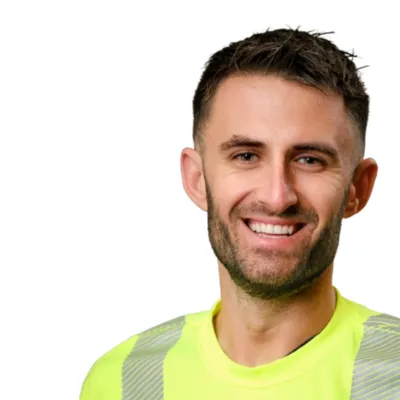Prevent Disruptions, SPADs, and Costly Delays
Treeline helps rail operators address one of their biggest safety and reliability challenges: unmanaged vegetation. With satellite imagery and AI, Treeline continuously monitors encroachment, fall-in hazards, and species linked to leaf adhesion, risks that traditional patrols often miss. Rail operators gain a network-wide view of vegetation risk, enabling smarter prioritization, optimized crew deployment, and automated compliance reporting.
.avif)
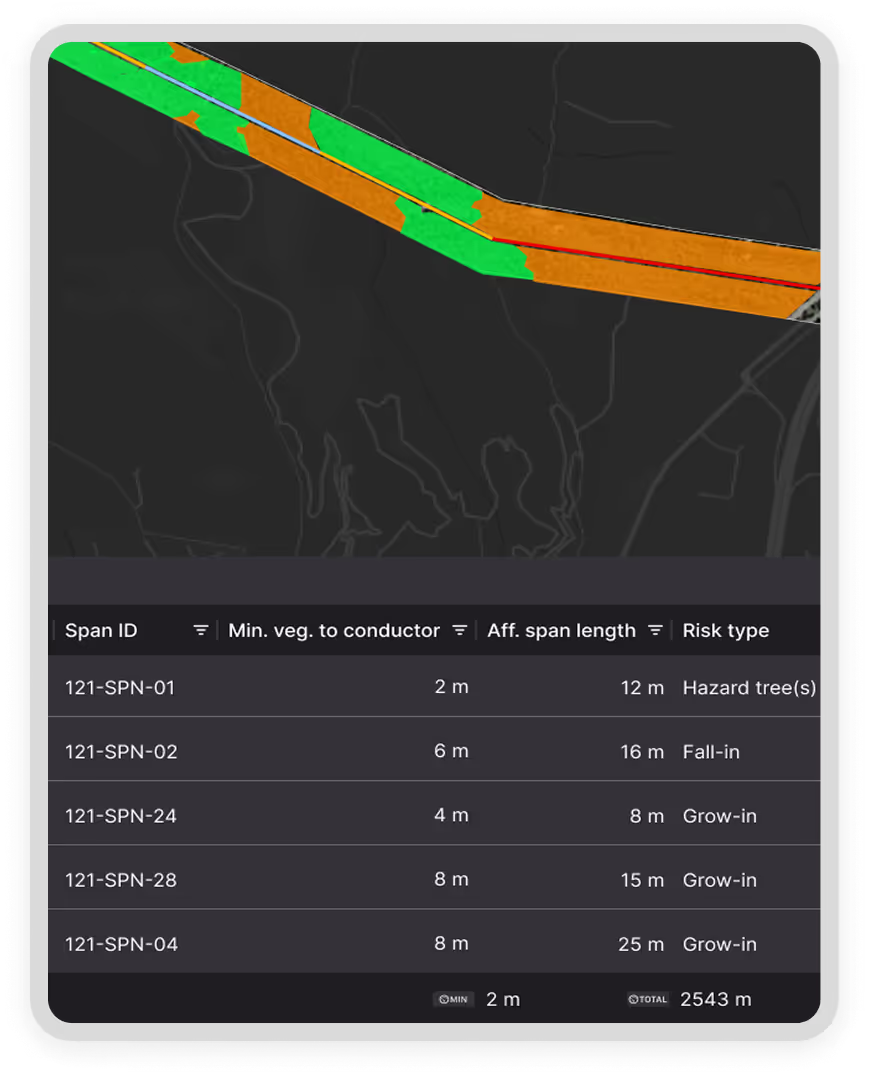
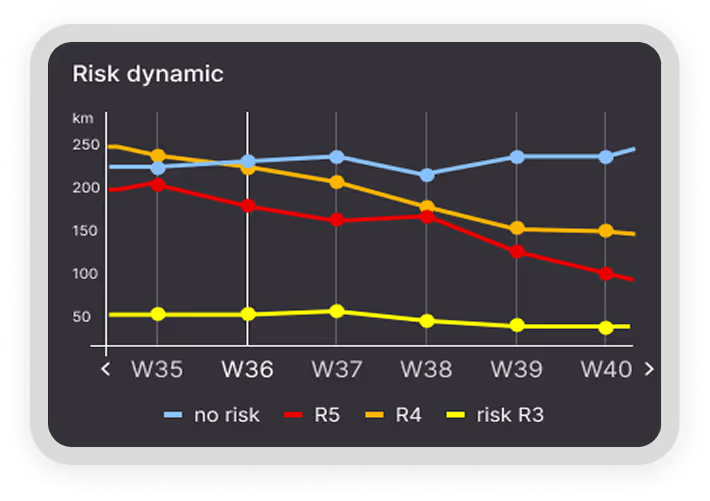
Trusted by Leaders Worldwide














Rail Operators Face Escalating Vegetation Threats
Fallen trees, encroachments, and seasonal leaf adhesion now account for major service disruptions, SPADs, and costly derailments. Traditional patrol-based inspections only provide snapshots in time, leaving dangerous gaps between checks. With shrinking resources and tighter regulations, rail operators can’t afford blind spots in vegetation management.
Hidden Hazards Between Trains
Vegetation growth, fallen branches, and invasive species can develop rapidly between patrols. By the time crews return, a small obstruction may have become a safety hazard capable of delaying or derailing trains.
Seasonal Threats Disrupt Operations
Leaf adhesion and fallen trees directly impact braking, visibility, and signaling. Each autumn, rail operators face millions in costs from delays, low adhesion, and emergency clearances.
Maintenance Windows Are Narrow
Crews often have just a few nighttime hours to carry out vegetation work near active tracks. These constraints make it critical to know exactly where risks are highest, so scarce maintenance time isn’t wasted on low-priority areas.
Service Interruptions Damage Trust
When vegetation hazards cause service delays or cancellations, passenger dissatisfaction is immediate and visible. Without proactive vegetation management, operators face not only higher costs but also declining public confidence.

"The LiveEO technology gives us a better overview of the vegetation along our tracks. It allows us to address the consequences of climate change even better."
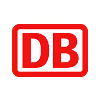
.webp)
From Reactive Inspections to
Proactive Rail Safety
Treeline transforms vegetation management for railways by replacing costly, ad-hoc patrols with continuous satellite- and AI-powered insights. Operators get a network-wide, condition-based view of risks, from hazard trees to leaf adhesion, enabling smarter planning, safer operations, and optimized use of limited resources.
Reduce Risk
Proactively address vegetation hazards before they disrupt service. Treeline helps reduce SPADs, derailments, and adhesion-related incidents by continuously monitoring encroachment, tree vitality, and species distribution. With geospatial risk assessment, rail operators can prevent accidents, protect passengers, and safeguard infrastructure.
Save Money
Optimize vegetation cycles and cut avoidable costs. Treeline reduces unnecessary repeat interventions, minimizes penalties from safety incidents, and helps operators avoid environmental restoration costs. With smarter prioritization, rail networks can achieve more reliable outcomes while stretching tight budgets further.
Move Faster
Streamline operations and accelerate response. Treeline integrates directly into rail workflows, turning risk insights into prioritized work orders. Crews can focus on the highest-risk areas during limited maintenance windows, while managers reduce service disruptions and speed up decision-making with data-backed clarity.
The Platform Built for Railway Vegetation Management
From identifying hazard trees and leaf adhesion hotspots to generating compliance-ready reports, Treeline unifies every part of railway vegetation management in one platform. Built for network-scale operations, it gives rail operators continuous visibility across thousands of miles of track, helping reduce derailments and delays, optimize scarce resources, and meet rising safety and environmental standards, all with fewer manual inspections and faster workflows.

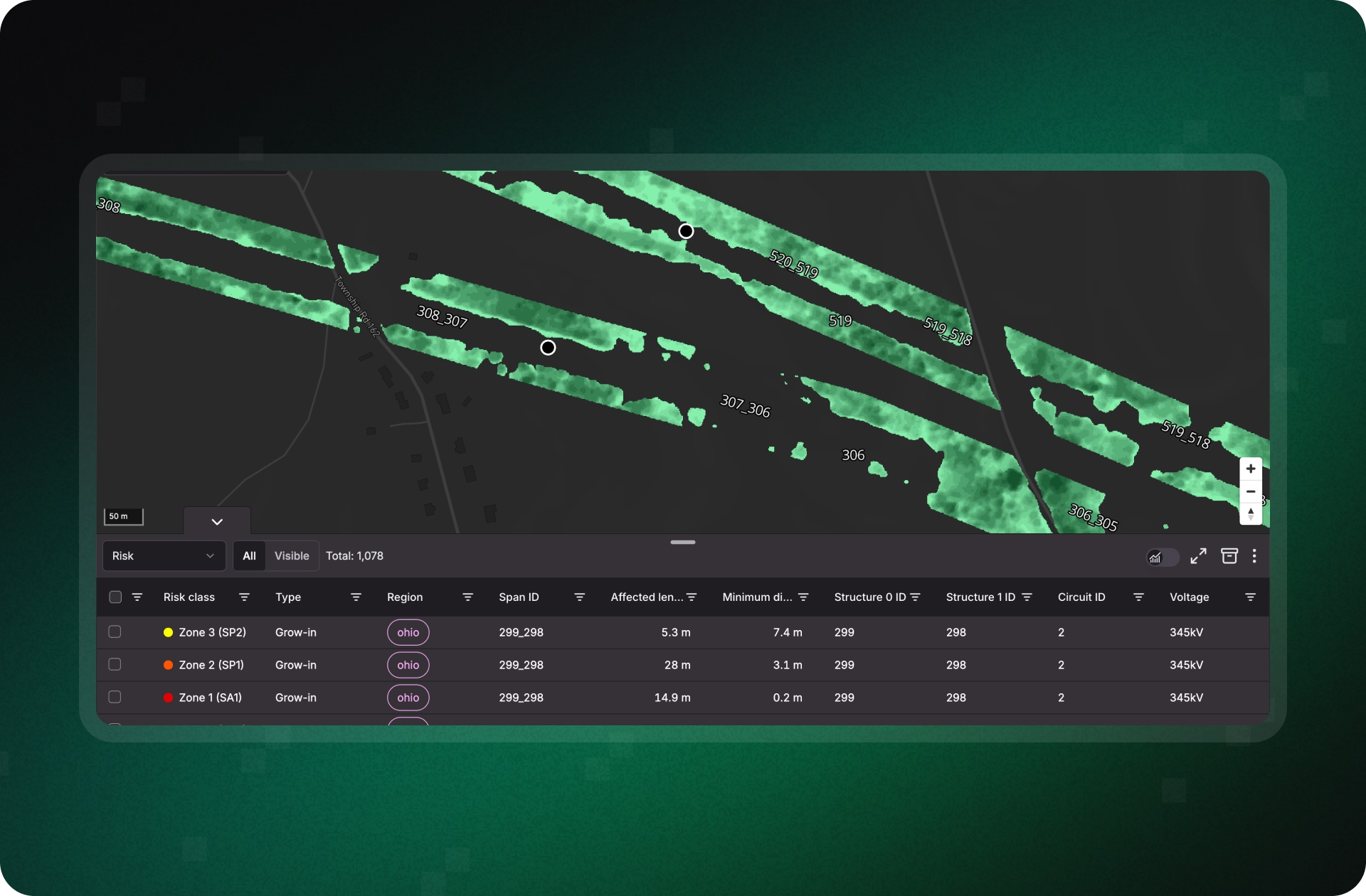
Spot Hazard Trees and Leaf Adhesion Risks Before They Disrupt Service
Treeline uses satellite imagery and AI to automatically detect fall-in hazards, grow-in encroachments, and species linked to adhesion issues. With continuous, corridor-wide monitoring, rail operators can act before trees fall, signals are obscured, or leaves cause braking problems, shifting from reactive clearance to condition-based prevention.

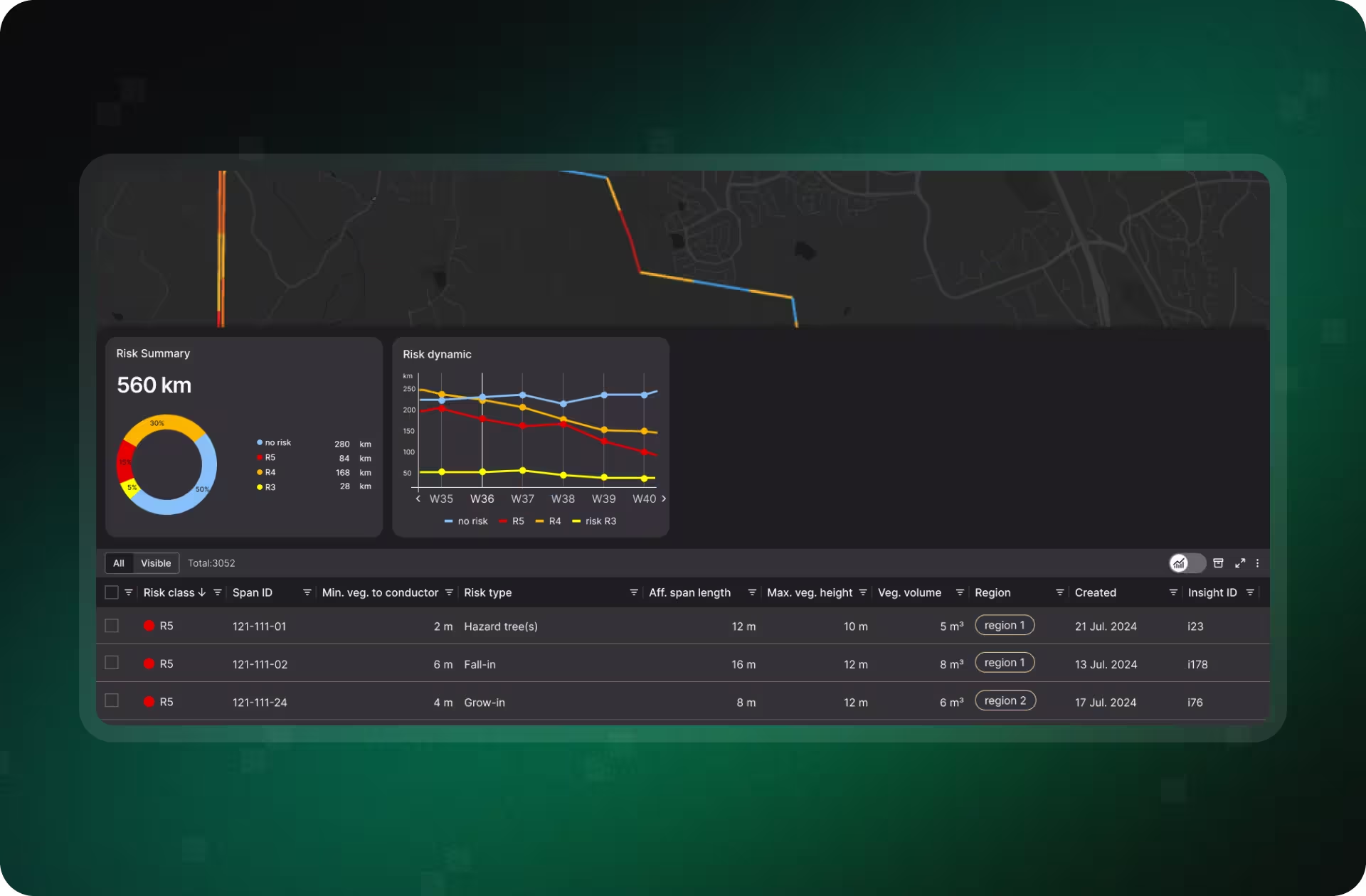
Prioritize Track Segments That Matter Most for Safety and Reliability
Treeline scores every section of track using a multi-factor model that accounts for species type, tree health, proximity to the line, and critical safety factors like signal sighting and low-adhesion zones. With intuitive dashboards and exportable tasks, operators can direct limited crews to the most pressing risks, maximizing safety while defending spend.

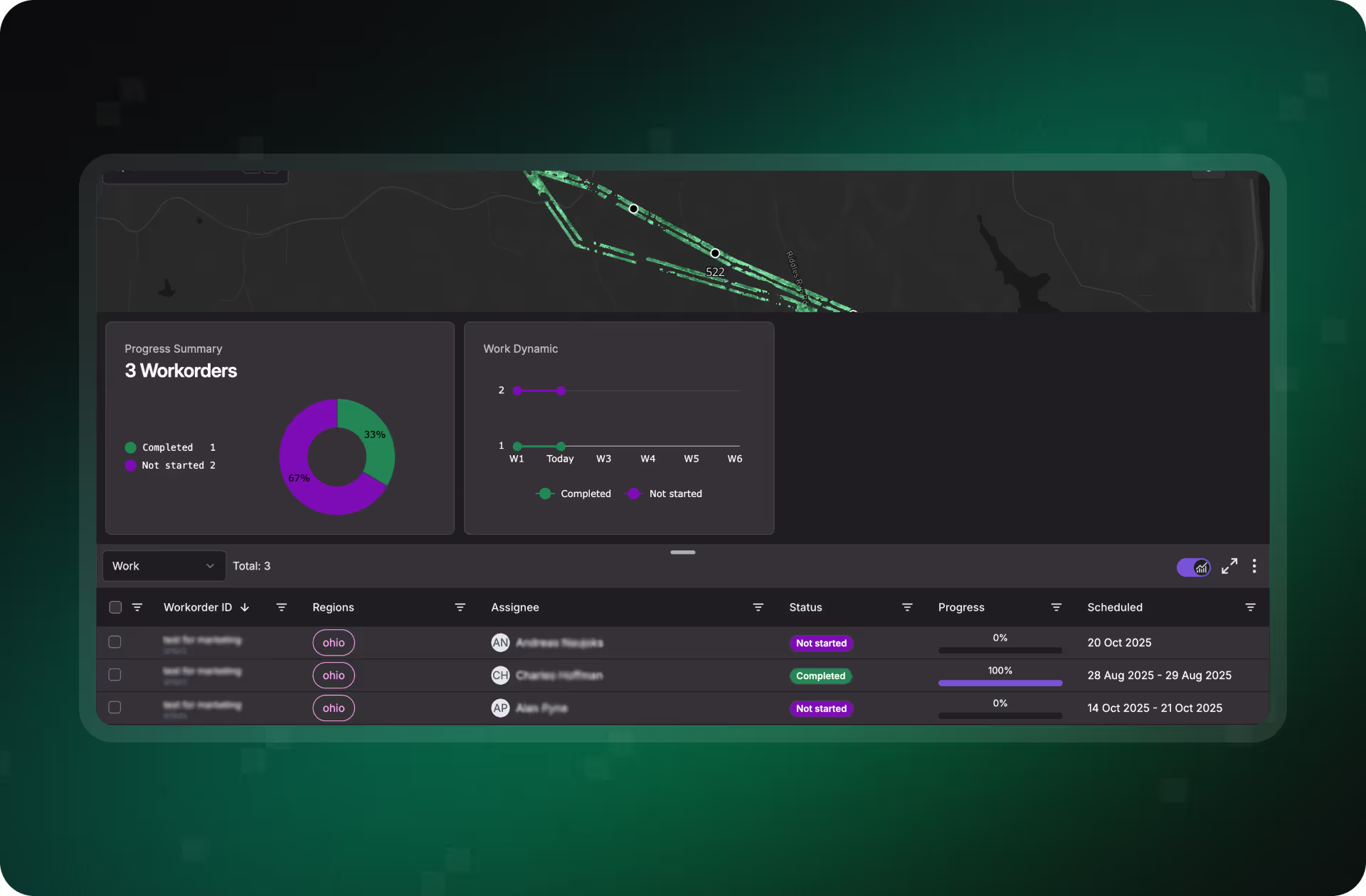
Send Crews Where Vegetation Poses the Highest Safety Risks
Treeline transforms risk insights into map-based work orders that fit directly into existing workflows. Crews receive clear, geolocated instructions, supervisors can track progress in real time, and every clearance job is verified with timestamped, GPS-tagged proof, ensuring work in narrow maintenance windows is spent where it matters most.

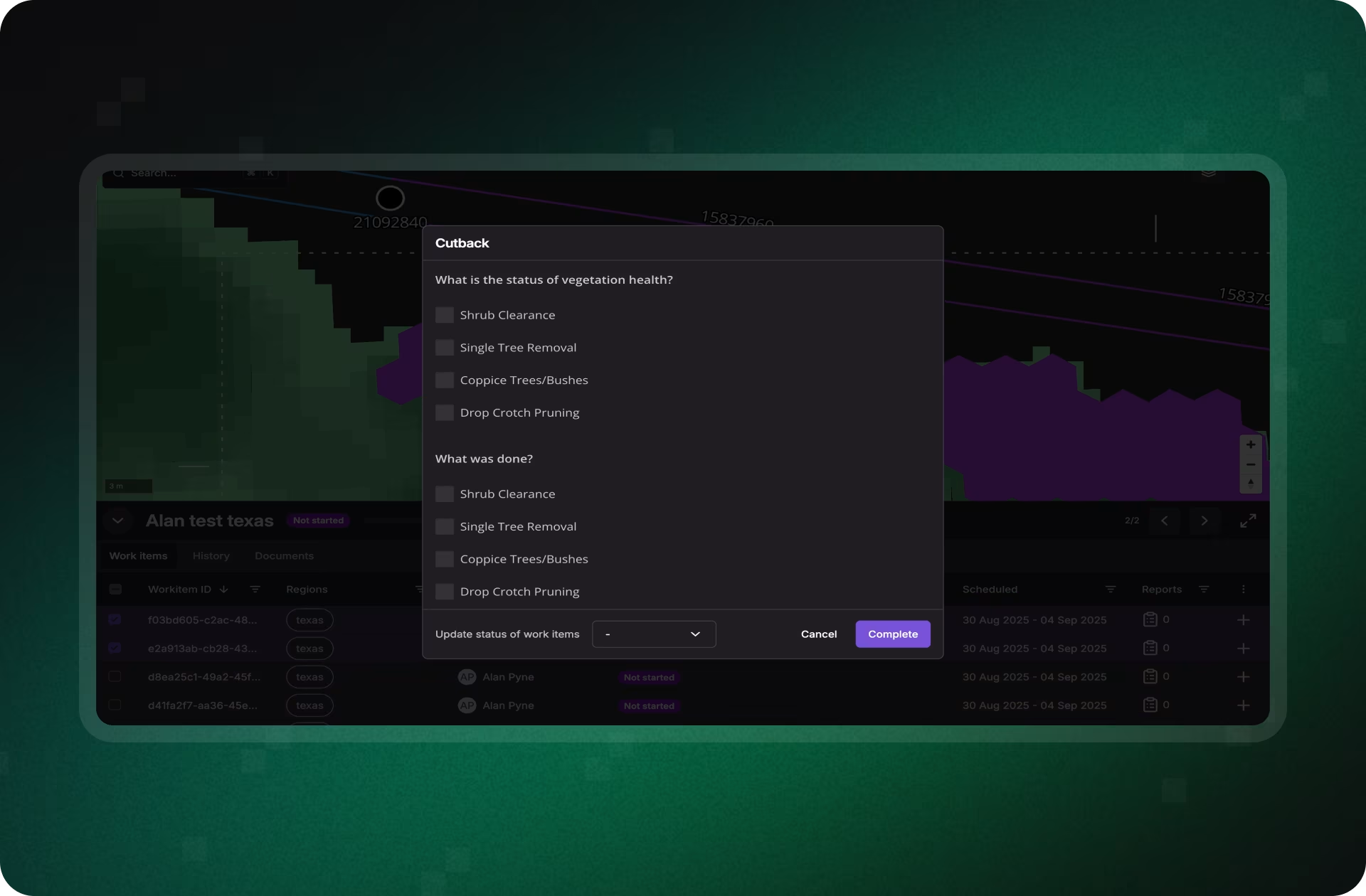
Stay Compliant With Transparent, Defensible Records
Treeline streamlines compliance reporting with dashboards, audit trails, and export-ready reports tied directly to track segments and interventions. From geo-tagged before/after evidence to automated clearance documentation, operators can demonstrate compliance with safety and environmental regulations, while also showing progress on biodiversity and ESG commitments.
Protect Your Tracks. Prevent Delays and Derailments.
Vegetation shouldn’t put passenger safety, service reliability, or compliance at risk. Treeline gives rail operators continuous visibility into encroachment, hazard trees, and leaf adhesion hotspots, helping you act early, deploy crews efficiently, and meet regulatory standards with confidence.
Smarter Vegetation Management in Action
See how utilities are using Treeline’s satellite- and AI-powered vegetation insights to cut inspection costs, reduce wildfire risk, and improve grid reliability.
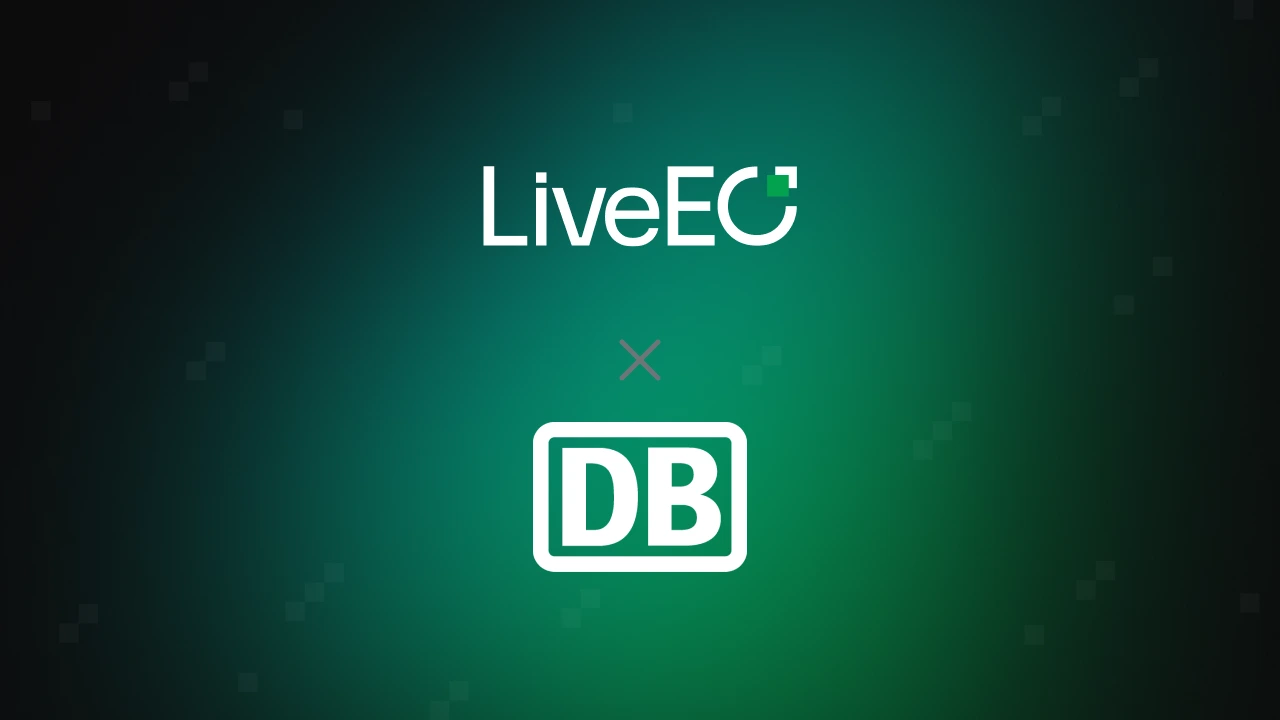
"The LiveEO technology gives us a better overview of the vegetation along our tracks. It allows us to address the consequences of climate change even better."


“Westerville Electric went with LiveEO and our outage rate in 2022 was 18%. We are now at 10%. This is the future of vegetation management!”

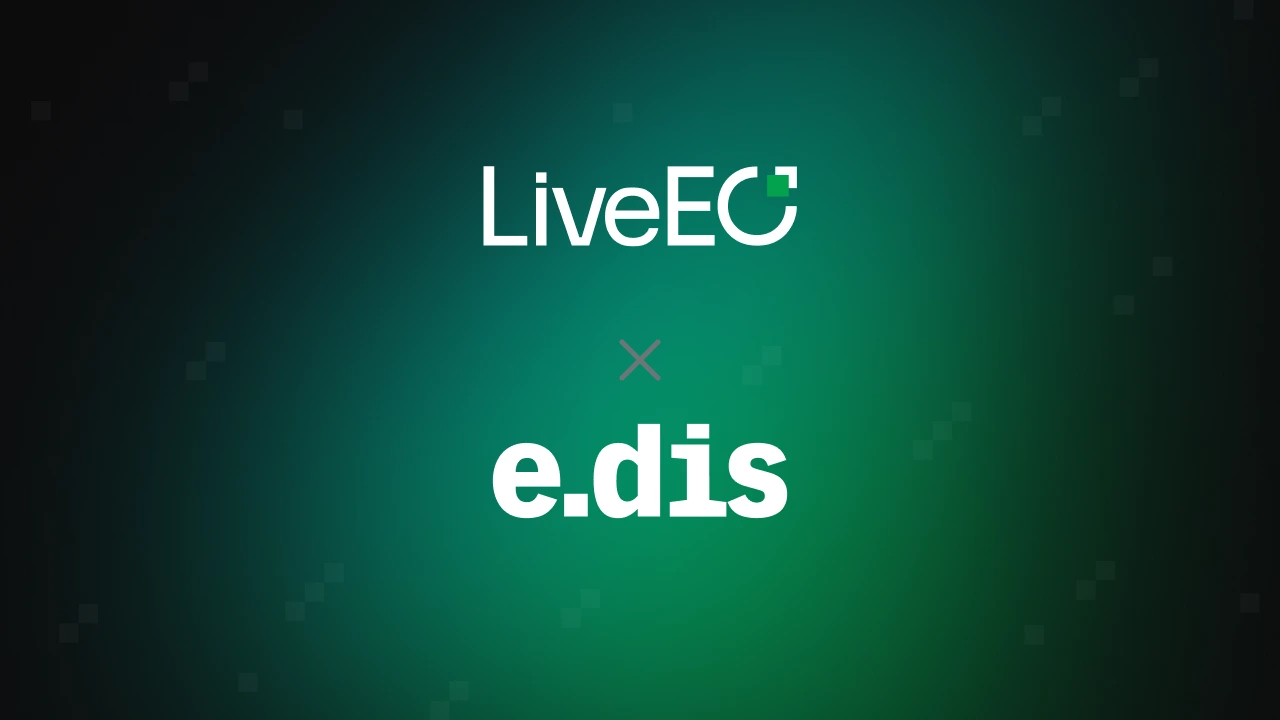
"The possibility to check our network with satellite images and AI as well as the strong customer focus of LiveEO have excited us from the beginning. Innovative partners like LiveEO and new technologies are an important pillar for us as a grid operator to make our network even more efficient and reliable."

FAQs
Find out how Treeline helps rail operators improve safety, reduce costs, and stay compliant with confidence.
How does Treeline improve rail safety?
Treeline continuously monitors vegetation near tracks, identifying hazard trees, encroachments, and species that cause leaf adhesion. This helps prevent derailments, SPADs, and costly service disruptions.
What is the cost justification for adopting Treeline?
By reducing the need for frequent patrols and enabling risk-based interventions, Treeline cuts OPEX per kilometer, lowers penalties from vegetation-related incidents, and optimizes the use of limited crews.
Can Treeline support compliance and reporting needs?
Yes. Treeline provides audit-ready, geospatially tagged records of vegetation conditions and interventions, making it easier to demonstrate compliance with safety and environmental standards.

